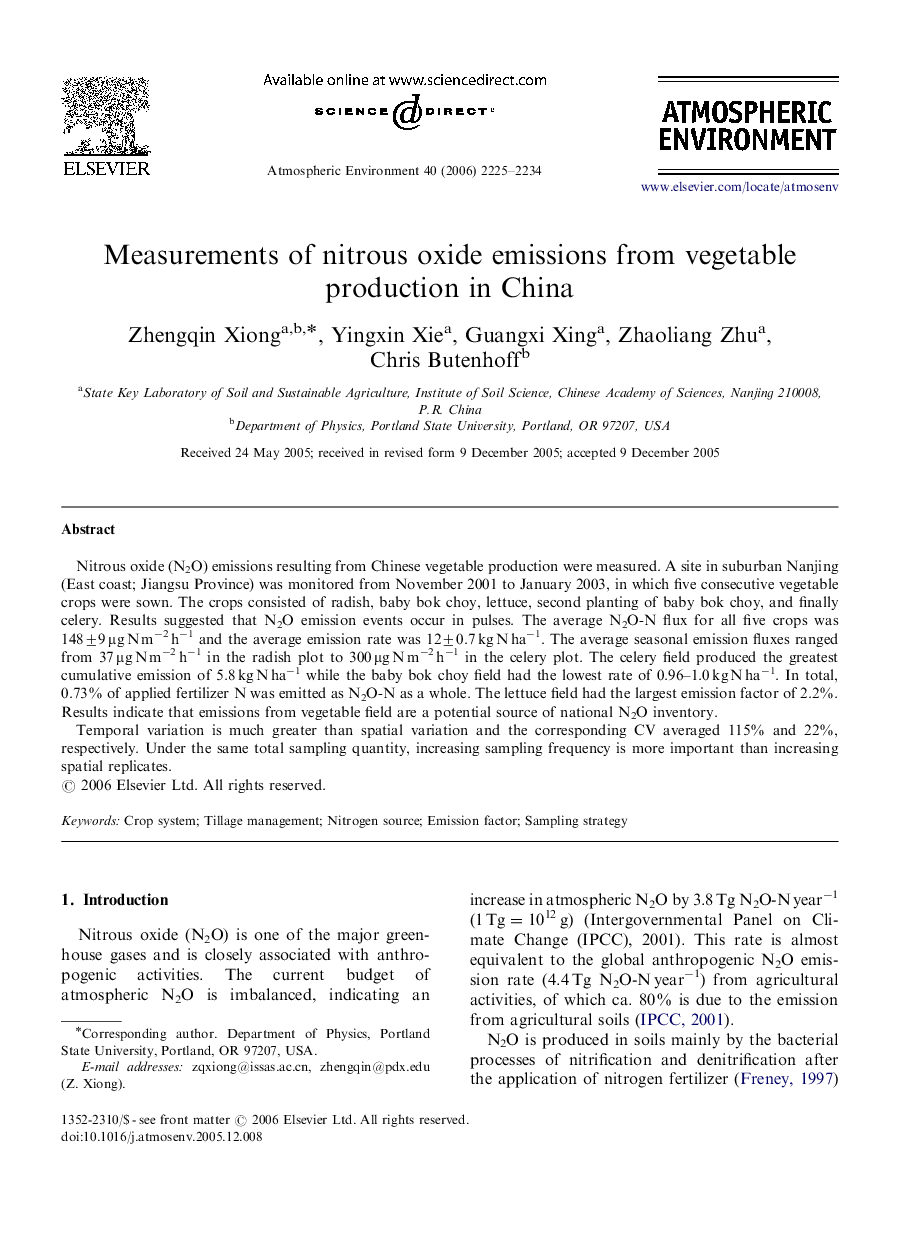| Article ID | Journal | Published Year | Pages | File Type |
|---|---|---|---|---|
| 4445068 | Atmospheric Environment | 2006 | 10 Pages |
Nitrous oxide (N2O) emissions resulting from Chinese vegetable production were measured. A site in suburban Nanjing (East coast; Jiangsu Province) was monitored from November 2001 to January 2003, in which five consecutive vegetable crops were sown. The crops consisted of radish, baby bok choy, lettuce, second planting of baby bok choy, and finally celery. Results suggested that N2O emission events occur in pulses. The average N2O-N flux for all five crops was 148±9 μg N m−2 h−1 and the average emission rate was 12±0.7 kg N ha−1. The average seasonal emission fluxes ranged from 37 μg N m−2 h−1 in the radish plot to 300 μg N m−2 h−1 in the celery plot. The celery field produced the greatest cumulative emission of 5.8 kg N ha−1 while the baby bok choy field had the lowest rate of 0.96–1.0 kg N ha−1. In total, 0.73% of applied fertilizer N was emitted as N2O-N as a whole. The lettuce field had the largest emission factor of 2.2%. Results indicate that emissions from vegetable field are a potential source of national N2O inventory.Temporal variation is much greater than spatial variation and the corresponding CV averaged 115% and 22%, respectively. Under the same total sampling quantity, increasing sampling frequency is more important than increasing spatial replicates.
